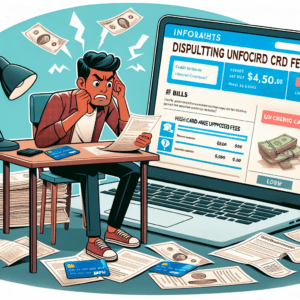“Protect Your Ride: Weighing the Value of Horse Insurance Investment.”
Understanding The Cost Of Horse Insurance: What Factors Affect Your Premiums?
When considering horse insurance, understanding the factors that influence the cost of premiums is essential. The price of coverage varies significantly based on several key elements, including the horse’s value, intended use, age, breed, and health status. Additionally, the type and extent of coverage selected play a crucial role in determining the overall cost. By examining these factors, horse owners can make informed decisions about whether the investment in insurance is worthwhile.
One of the most significant factors affecting the cost of horse insurance is the animal’s value. Insurance providers typically base premiums on the horse’s market worth, which is determined by factors such as purchase price, training level, competition history, and breeding potential. A high-value horse, such as a top-performing show jumper or racehorse, will generally have higher insurance costs than a recreational riding horse. This is because the financial risk associated with insuring a valuable horse is greater, leading to increased premiums.
Another important consideration is the horse’s intended use. Horses used for competitive disciplines, such as dressage, eventing, or racing, are exposed to higher risks of injury, which can result in more expensive insurance policies. In contrast, horses used for light riding or companionship typically have lower premiums due to their reduced likelihood of sustaining serious injuries. Insurance providers assess the level of risk associated with each activity and adjust premiums accordingly.
Age also plays a crucial role in determining insurance costs. Younger horses, particularly those in training or early competition careers, may have higher premiums due to their increased likelihood of injury. Conversely, older horses may also face higher insurance costs, as they are more prone to age-related health issues. Some insurance providers impose age restrictions on coverage, limiting the availability of certain policies for senior horses. Understanding how age impacts insurance costs can help owners plan for long-term financial commitments.
Breed and health status further influence insurance premiums. Certain breeds are predisposed to specific health conditions, which can affect the cost of coverage. For example, larger breeds such as Warmbloods and Thoroughbreds may be more susceptible to joint issues, while ponies often have a lower risk of serious health problems. Additionally, a horse’s medical history plays a significant role in determining insurance costs. Pre-existing conditions or a history of injuries may lead to exclusions in coverage or increased premiums. Insurance providers typically require a veterinary examination before issuing a policy to assess the horse’s overall health and identify any potential risks.
The type and extent of coverage selected also impact the cost of horse insurance. Basic mortality insurance, which covers the horse’s value in the event of death due to illness, injury, or accident, is generally the most affordable option. However, many owners choose to add major medical or surgical coverage to protect against unexpected veterinary expenses. These additional policies can significantly increase premiums but provide valuable financial protection in the event of costly medical treatments. Other optional coverages, such as loss of use or liability insurance, further contribute to the overall cost.
Ultimately, the cost of horse insurance depends on a combination of these factors, and each owner must weigh the financial investment against the potential benefits. By carefully evaluating the risks associated with horse ownership and selecting appropriate coverage, owners can ensure they are adequately protected while managing costs effectively.
Is Horse Insurance Worth The Investment? Weighing The Benefits And Risks

Owning a horse is both a privilege and a responsibility, requiring significant financial and emotional investment. Beyond the initial purchase price, horse owners must consider ongoing expenses such as feed, boarding, veterinary care, and training. One critical yet often overlooked aspect of horse ownership is insurance. While some may view it as an unnecessary expense, others see it as a safeguard against unforeseen financial burdens. To determine whether horse insurance is worth the investment, it is essential to weigh the benefits and risks associated with it.
One of the primary advantages of horse insurance is financial protection. Horses, like any other living beings, are susceptible to illness, injury, and accidents. Veterinary treatments, surgeries, and rehabilitation can be costly, sometimes reaching thousands of dollars. Without insurance, owners may face difficult decisions regarding their horse’s care, especially if the required treatment is beyond their financial means. Insurance policies that cover medical expenses can alleviate this burden, ensuring that the horse receives the necessary care without causing financial strain.
In addition to medical coverage, mortality insurance provides compensation in the unfortunate event of a horse’s death due to illness, injury, or accident. This type of coverage can be particularly beneficial for owners who have invested substantial amounts in their horse, whether for breeding, competition, or personal enjoyment. Losing a horse is not only emotionally devastating but can also result in significant financial loss. Mortality insurance helps mitigate this impact by reimbursing the owner for the horse’s insured value, allowing them to recover some of their investment.
Beyond medical and mortality coverage, some insurance policies offer liability protection. Horses, by nature, can be unpredictable, and accidents involving them can lead to property damage or personal injury. If a horse were to escape from its enclosure and cause an accident or injure someone, the owner could be held legally and financially responsible. Liability insurance provides coverage in such situations, protecting owners from potential lawsuits and financial repercussions. This type of coverage is particularly important for those who board horses, operate equestrian businesses, or participate in public events.
Despite these benefits, horse insurance does come with certain drawbacks. One of the most significant concerns is the cost. Premiums vary depending on factors such as the horse’s age, breed, use, and overall health. Additionally, policies often include deductibles and exclusions, meaning that not all medical conditions or treatments may be covered. Some owners may find that the cost of insurance outweighs the potential benefits, particularly if their horse is young, healthy, and not involved in high-risk activities.
Another consideration is the complexity of insurance policies. Understanding the terms, conditions, and limitations of coverage can be challenging, requiring careful review and comparison of different providers. Some policies may have strict requirements for pre-existing conditions, routine care, or specific medical procedures, which could limit their usefulness. Owners must thoroughly research and select a policy that aligns with their needs and financial situation.
Ultimately, the decision to invest in horse insurance depends on individual circumstances. For those who rely on their horse for competition, breeding, or business purposes, insurance can provide invaluable financial security. Conversely, owners with lower-risk horses and sufficient savings may choose to self-insure by setting aside funds for emergencies. By carefully evaluating the benefits and risks, horse owners can make an informed decision that best protects both their financial interests and their horse’s well-being.
Comparing Horse Insurance Plans: Finding The Best Coverage For Your Budget
When evaluating the cost of horse insurance, it is essential to compare different plans to determine which offers the best coverage for your budget. With various policies available, each providing different levels of protection, understanding the key factors that influence pricing and coverage can help you make an informed decision. Since horses represent a significant financial and emotional investment, ensuring they are adequately protected is a priority for many owners. However, the challenge lies in balancing comprehensive coverage with affordability.
One of the primary considerations when comparing horse insurance plans is the type of coverage offered. Mortality insurance, which functions similarly to life insurance for horses, is often the foundation of most policies. This coverage reimburses the owner for the horse’s value in the event of death due to illness, injury, or accident. While this type of insurance provides financial security, it is often supplemented with additional coverage options, such as major medical and surgical insurance. These policies help cover veterinary expenses related to illness or injury, which can be substantial. Given the rising costs of equine medical care, many owners find that adding medical coverage is a worthwhile investment.
Beyond mortality and medical insurance, some policies offer coverage for loss of use, which provides compensation if a horse becomes permanently unable to perform its intended function due to injury or illness. While this type of insurance can be beneficial for competitive or working horses, it tends to be more expensive and may come with strict conditions regarding payout eligibility. Additionally, liability insurance is another important consideration, particularly for owners who board horses, offer riding lessons, or participate in public events. This coverage protects against legal claims in the event that a horse causes injury or property damage.
As you compare different insurance plans, it is crucial to assess the cost of premiums in relation to the level of coverage provided. Premiums are influenced by several factors, including the horse’s age, breed, use, and overall health. Younger horses and those used for high-risk activities, such as racing or jumping, typically have higher premiums due to the increased likelihood of injury. Additionally, pre-existing conditions may limit coverage options or result in exclusions, making it important to review policy terms carefully.
Another key aspect to consider is the deductible and co-pay structure of medical and surgical policies. A lower deductible generally results in higher premiums, while a higher deductible can reduce monthly costs but may require greater out-of-pocket expenses in the event of a claim. Evaluating these trade-offs is essential to finding a policy that aligns with both your financial situation and risk tolerance. Furthermore, policy limits and exclusions should be examined closely, as some plans may impose caps on reimbursement amounts or exclude coverage for specific conditions or treatments.
Ultimately, selecting the right horse insurance plan requires a careful balance between cost and coverage. While it may be tempting to choose the least expensive option, inadequate coverage can lead to significant financial strain in the event of an emergency. By thoroughly comparing policies, understanding the terms and conditions, and considering the specific needs of your horse, you can make a well-informed decision that provides both financial protection and peace of mind.
















